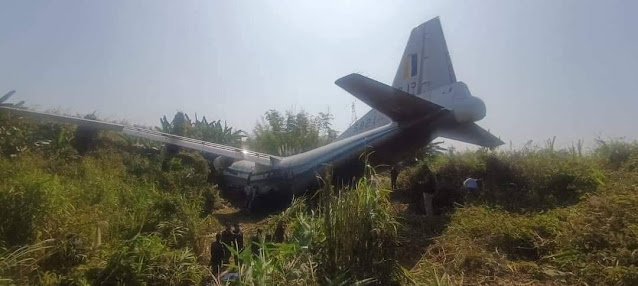Myanmar Spring Chronicle – January 23 by MoeMaKa Media:
Fleeing Soldiers and City Destruction
In a dramatic turn of events, military council soldiers trapped in the Paletwa region of Chin State sought refuge in neighboring India, fleeing the relentless assaults by the Arakan Army. Sources report that hundreds, if not thousands, of soldiers have crossed the border into India, appealing for assistance to save their lives. India, known for providing aid to refugees affected by the war, typically bars entry to armed groups. However, the dire circumstances prompted India to accommodate the fleeing soldiers, emphasizing their need for protection.
To repatriate these soldiers, the military council engaged in discussions with India. Reports indicate that nearly 800 military council troops, who recently fled from the Paletwa region, sought refuge in India. The military’s past practice involved bringing back fleeing troops from the Indian side through military aircraft.
However, on January 23, a Y-8 plane owned by the military junta skidded off the runway upon landing outside its designated area, resulting in the tragic deaths of eight people on board. Additionally, reports surfaced of another accident involving the vehicle transporting the injured at the airport. The soldiers who returned from India were redeployed to the ongoing battlefront in Rakhine State rather than being given respite, as per statements from the Arakan Army (AA).
This development highlights the military council’s evident struggle and the urgency to bolster its forces. The AA’s strategic seizure of Paletwa, bordering Bangladesh and India, serves as a crucial military base, marking the first instance of the military council losing control to this extent.
Another pressing concern revolves around the escalating damage inflicted on city markets, residential buildings, and properties, stemming from fire attacks during city capture battles and prolonged deliberate destruction. Recent reports cite Tigyaing, Kawkareik, Pauktaw, Minbya, and Mongmit as cities witnessing extensive damage.
Tigyaing, in particular, has suffered severely, with reports suggesting that 90 percent of the city has been destroyed over the past three months due to relentless fighting. Both sides engaged in city attacks, with military council aerial assaults exacerbating the destruction. The KIA’s attempts to capture Mongmit and Mabein townships in northwest Shan State faced challenges, leading to reports of a market in Mongmit Town being ravaged by the explosion of a large artillery shell.
Loikaw, a city engaged in prolonged conflict since November, witnessed the KNDF’s takeover of state offices, including Loikaw University and the district court. However, certain areas, including Loikaw prison and some neighborhoods, remain under military council control. Reports highlight the destruction of the South Market in Loikaw City and significant damage to residential buildings.
Cities in Rakhine State, including Pauktaw and Minbya, also faced substantial destruction, especially after over two months of fierce fighting that concluded on January 19, with the AA successfully seizing Minbya. Kawkareik in Karen State, under attack since November, witnessed at least 60 houses being destroyed by fire.
The seizure of cities by revolutionary forces aims to dismantle military council administration, showcasing imminent victories. However, for the residents, such battles instill fear of losing their homes and markets to fires, underscoring the profound impact on the public amidst the ongoing conflict.

